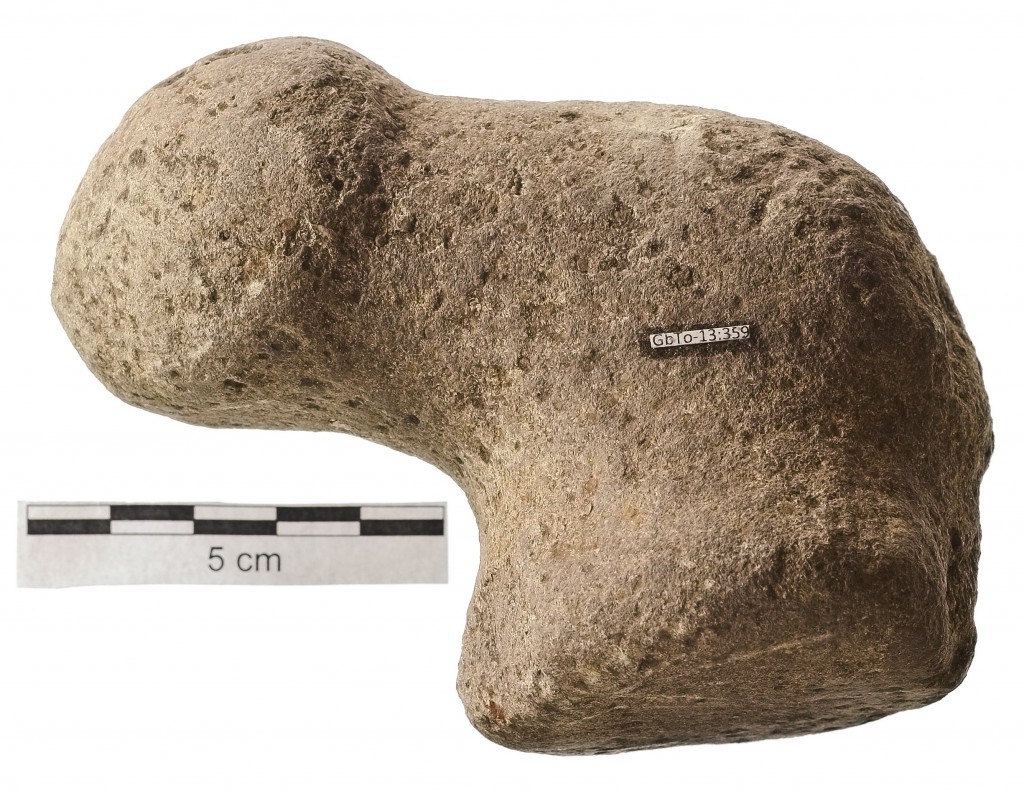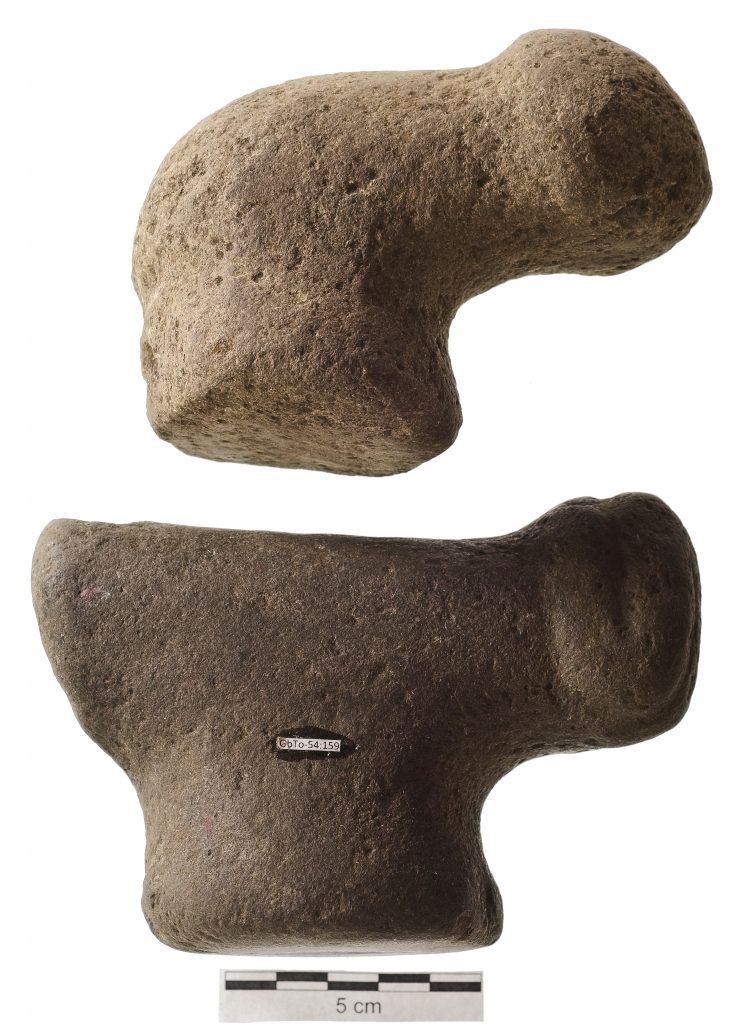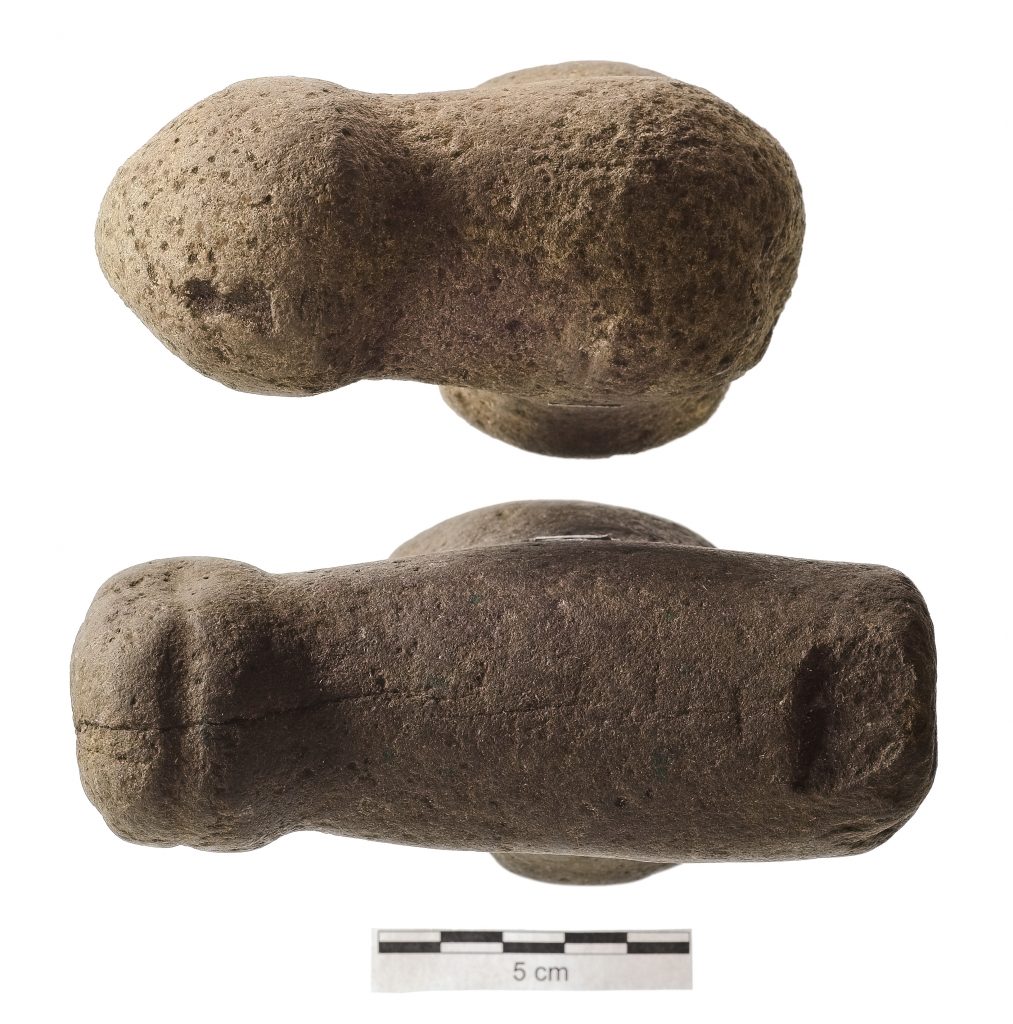T-Shaped Mauls Part II
The much anticipated second installment of the Millennia Blog’s T-Shaped Maul series is here!
In our October 17th blog entry, 3D Mauls and Segmented Stones “In-Situ”, we featured two of the mauls found at site GbTo-54 in situ touching one another. This T-Shaped Hand Maul, from site GbTo-13, was found on it’s own. In the earlier comments, Ken Ames asked for more on the second T-shaped maul, and we are sure this is of interest to many others.
In a planned entry, we’ll show you the interesting relationship between the ’54 mauls and several other hammerstones and a trench feature, in 3-D.

“T-shaped Mauls” As described in our October 17th post 3D Mauls and Segmented Stones “In-Situ” , these were used to pound wooden stakes, chisel handles, or wood, antler, or sea-mammal wedges. The time consuming pecking and grinding processes made these mauls highly curated; in other words, they were really carefully looked after and expected to last a lifetime, or even be passed to a descendant. Consequently, they are extremely rare. It has been hypothesized that the T-Shaped Maul is the predecessor to the “Stirrup” or “D-Shaped Maul”, or possibly that a broken “Stirrup” or “D-Shaped Maul” could be re-worked as a T-Shaped Maul or Sloped Maul (Stewart 1996:36; Duff 1975 ). These don’t support that theory, and were clearly made as ‘T” shapes to start with.


Differences: The base of GbTo-54:159 is smooth and slightly convex, whereas the base of GbTo-13: 359 is more heavily battered and pitted. This could reflect hammering vs grinding (Stewart 1981:58) or perhaps just a relative amount of wear.
Similarities: between these two mauls include the diameter of the striking head, the width of the handle grip, the decorative heads, and the curve formed between the bottom of the handle and the striking head (see the left pair of images). They have also been similarly reworked after a break.
Incidentally, a very similar repaired T-maul is in the Sheldon Jackson Museum in Alaska https://education.alaska.gov/productcart/pc/viewPrd.asp?idproduct=2908&idcategory=4#details
Click of the image below to check out this maul in 3D for yourself!
(Hint: try the different ‘shade’ options top left of the options once in the 3-D program for different ways of seeing this amazing artifact)
Check out 3D Mauls and Segmented Stones “In-Situ” for a 3D version of GbTo-54:159.
Duff, W.
1975 Images Stone B.C. Thirty Centuries of Northwest Coast Indian Sculpture. University of Washington Press, Seattle, WA.
Stewart, H.
1996: Stone, Bone, Antler & Shell: Artifacts of the Northwest Coast. Douglas & Mcintyre, Vancouver, BC.
1981: Artifacts of the Northwest Coast Indians. Revised from 1977 edition ed. Douglas & Mcintyre, Vancouver, BC.
